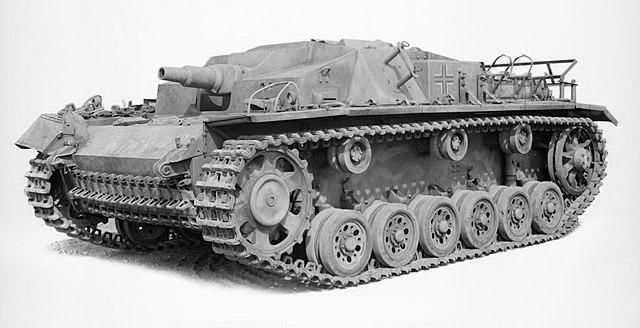The infanterikanonvagn 91, lit. 'infantry cannon wagon 91', was a high mobility assault gun that was developed to meet the operational requirements of the Swedish Army. It was designed and manufactured by Hägglund & Söner and employed common components with the Pbv 302 armoured personnel carrier series. The first prototypes of the ikv 91 were completed in 1969 with production running from 1975 until 1978. In total, 212 were manufactured.
Infanterikanonvagn 91 (ikv 91)
Side view showing the long, 54-calibre low pressure 90 mm main gun.
Vehicle frontal view
An assault gun is a type of self-propelled artillery which uses an infantry support gun mounted on a motorized chassis, normally an armored fighting vehicle, which are designed to provide direct fire support for infantry attacks, especially against other infantry or fortified positions. Assault guns were pioneered by the Soviet Union and Nazi Germany during the 1930s, initially being self-propelled guns with direct fire in mind, with Germany introducing the first purpose-built assault gun, the Sturmgeschütz III, in 1940.
The Soviet SU-76 was easily constructed in small factories incapable of producing proper tanks.
The German Stug III assault gun, here in one of its early configurations, armed with a 75 mm StuK 37 howitzer
US World War II assault gun M8 Scott
Soviet ASU-85 air-deployable assault gun







